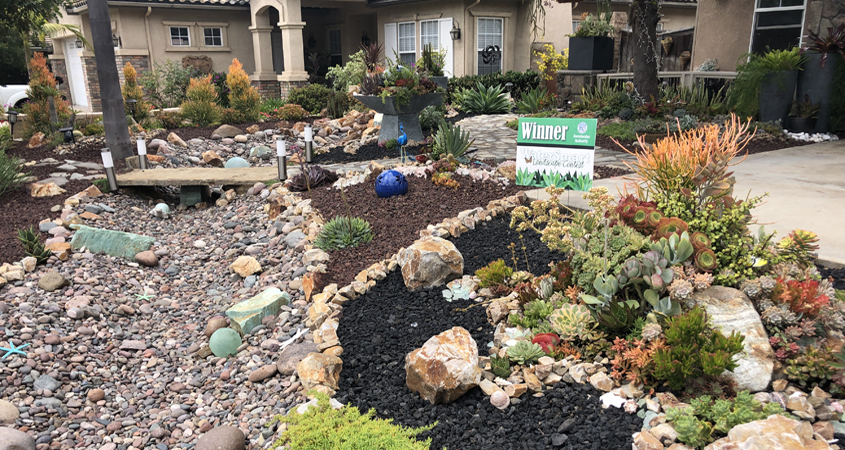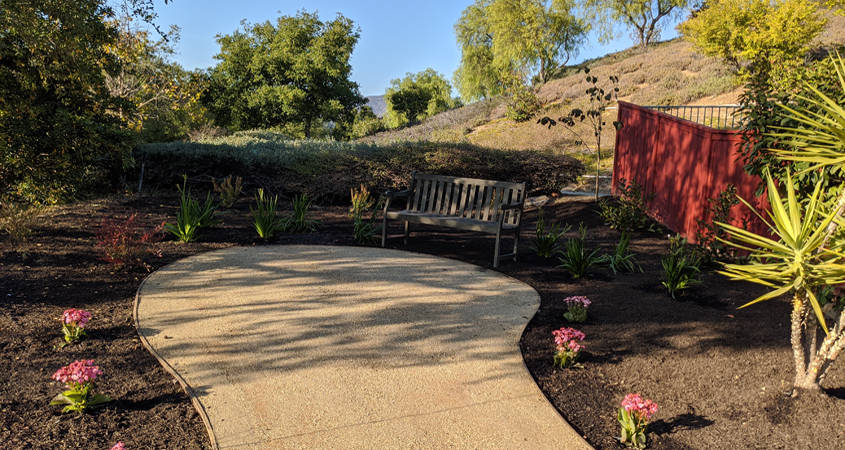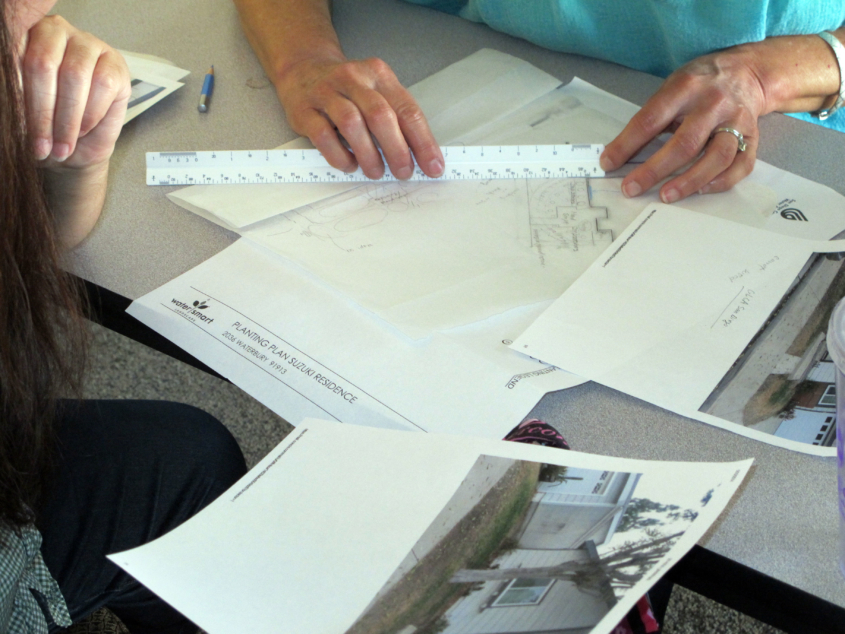Winter Weather Perfect Time for WaterSmart Landscape Makeover Series
December rainfall and cooler temperatures in San Diego County make it the perfect time of year for homeowners to create low-water-use landscaping to fit their needs. The San Diego County Water Authority offers its first 2022 WaterSmart Landscape Makeover Series of free online classes starting Wednesday, February 2. The classes provide homeowners site-specific knowledge, skills, and confidence to transform their thirsty turf yard into a beautiful, climate-appropriate, water-efficient space.
Registration for the four-class series closes on Monday, January 17. Register at WaterSmartSD.org. There is no fee to participate, but course participation is limited.
Custom plans and one-on-one professional guidance

This landscape makeover winner shows how contouring your landscaping can help retain and conserve water. Photo: Sweetwater Authority
Water Authority Water Resources Specialist Joni German said the course will give participants a customized roadmap to follow.
“We have different templates and themes to design the garden you want,” said German. “Do you need turf for the kids or pets? A meditation space? Or do you want to screen out undesirable views? With our help, you design the landscape that fits your lifestyle.”
Ideal time for new plants
German said with soils now soft and spongy, it’s the ideal time of year to add new plants and creating a new water-wise landscape.
As part of the course, participants will receive a site visit prior to the class, a preliminary onsite CAD drawing of their property to work with during the class, and one-on-one coaching from landscaping professionals.
Turf rebate programs offer rebates of up to $3 per square foot toward project costs for upgrading existing turf. To date, several hundred homeowners have transformed their landscapes into beautiful, climate-appropriate mini-watersheds which yield benefits including stormwater runoff reduction and lessening green waste in addition to saving water.
Positive participant feedback for free program

Eileen Koonce says she was able to install her own landscaping with the help she received from course instructors. Photo: Vallecitos Water District
German said the program has evolved through the years in part due to feedback from previous participants, including information about capturing rainwater and cutting back on irrigation.
“People frequently say to us, ‘I can’t believe this program is free!’ Recent participants tell us the time flies, and they go from feeling overwhelmed to confident about their landscape projects,” said German.
Vallecitos Water District Development Services Coordinator Eileen Koonce participated in the course as a new homeowner to reduce her water usage by removing her thirsty front lawn.
Koonce said she enjoyed working with the instructors.
“They bring the language down to the do-it-yourselfers,” said Koonce. “They walk you through every part of it and if you have questions, they can help you out. You feel empowered because you can understand the process.”

Landscaping designers can expedite your landscape makeover plans. Photo: San Diego County Water Authority
Koonce tackled most of the design work herself with the help of instructors, who are licensed landscape architects. Instructors helped Koonce pick out the plants and choose an irrigation system.
After participants sign up for the four-class course, a site visit will take place with a local, licensed landscape specialist who will create a professionally-drawn site plan of your specific project area. The plans becomes a personal road map to navigate through the classes. Before the class concludes, homeowners get one-on-one coaching to help select plants and finalize their plan.
Watch the preview video
Homeowners with questions about the course can email or call (858) 598-5085 for information. Space is limited so homeowners are encouraged to apply now at WaterSmartSD.org.
(Editor’s note: The Sweetwater Authority, Vallecitos Water District, and the Padre Dam Municipal Water District are three of the San Diego County Water Authority’s 24 member agencies that deliver water across the metropolitan San Diego region.)



